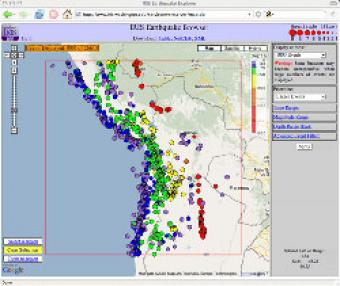Novice Spanish
Earth is an active place and earthquakes are always happening somewhere. In fact, the National Earthquake Information Center locates about 12,000-14,000 earthquakes each year! This fact sheet illustrates information on the frequency of earthquakes of various magnitudes, along with details on the effects of earthquakes and the equivalent energy release. On average, Magnitude 2 and smaller earthquakes occur several hundred times a day world wide. Major earthquakes, greater than magnitude 7, happen more than once per month. "Great earthquakes", magnitude 8 and higher, occur about once a year.
NOTE: Out of stock; self-printing only.
Requesting Fact Sheets:
To request hardcopies of E&O materials, please send an email to: EandOproduct@iris.edu with the following information:
PLEASE NOTE: Time-sensitive requests must be sent at least three weeks before the date they are needed. When e-mailing a time-sensitive request, please write "Time-Sensitive Request" in the subject line.

The IRIS Earthquake Browser (IEB) is an interactive tool for exploring millions of seismic event epicenters (normally earthquakes) on a map of the world. Selections of up to 5000 events can also be viewed in 3D and freely rotated with the 3D Viewer companion tool.

The "moment magnitude" scale has replaced the Richter scale for large earthquakes. Scientists have developed far-more sensitive seismometers that, with faster computers, have enabled them to record & interpret a broader spectrum of seismic signals than was possible in the 1930's, when the Richter magnitude was developed. Find out what scientists learn from seismograms.